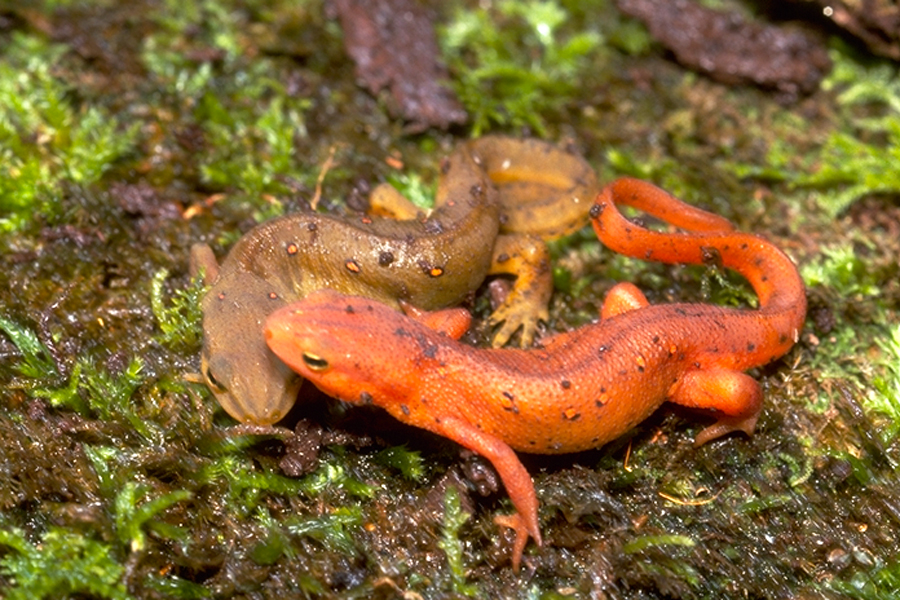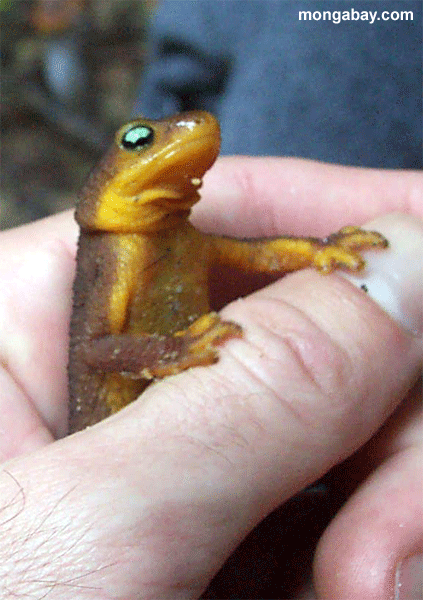North America, Europe and Asia. Newts metamorphose through three distinct developmental life stages: aquatic larva, terrestrial juvenile (called an eft and adult. Adult newts have lizard-like bodies and may be either fully aquatic, living permanently in the water, or semi-aquatic, living terrestrially but returning to the water each year to breed. They have the ability to regenerate limbs, eyes, spinal cords, hearts, intestines, and upper and lower jaws. The cells at the site of the injury have the ability to de-differentiate, reproduce rapidly, and differentiate again to create a new limb or organ. This distinguishes them from the free-floating eggs of frogs or toads, that are laid in clumps or in strings. Plant leaves are usually folded over and adhered to the eggs to protect them. The tadpoles, which resemble fish fry but are distinguished by their feathery external gills, hatch out in about three weeks. After hatching they eat algae, small invertebrates or other tadpoles.
During the next few months the tadpoles undergo metamorphosis, during which they develop legs, and the gills are absorbed and replaced by air-breathing lungs. Some species, such as the North American newts, also become more brightly coloured during this phase. Once fully metamorphosised they leave the water and live a terrestrial life, when they are known as "efts".

newt pictures

newt pictures

newt pictures

newt pictures

newt pictures

newt pictures

newt pictures

newt pictures wallpapers
 newt pictures
newt pictures





